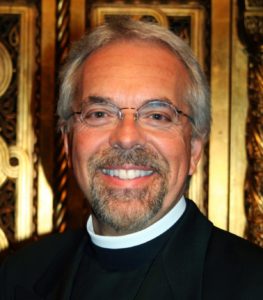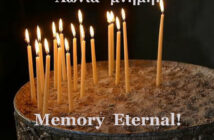
Fr Frank Marangos
Source: Oinos Educational Consulting
By Frank Marangos, D. Min., Ed. D., FCEP
“Nothing ever happens in the world that does not happen first inside human hearts.” ~ Archbishop Fulton J. Sheen
Who are the homeless . . . the tent-less of our society? And who, if anyone, stole their shelters? While physical homelessness is, indeed, one of the most critical societal privations of our time, like Watson, sometimes our most thoughtful reasonings fail to accurately identify its most salient root causes. Homelessness is more than the deprivation of a job or physical lodging but simultaneously the pilfering of inner sacred canopies. It is a malady of the heart as well as an essential requirement of the body.
In his book, Life Is Worth Living (1999), the Catholic Archbishop Fulton J. Sheen insisted that “nothing ever happens in the world that does not happen first inside human hearts.” Based on his insightful question-and-answer television broadcasts, Fulton emphasized a process of honest observation that reaches into humanity’s heart, mind and souls to identify the core triggers of the majority of societal ills. “The only way out of this crisis,” the Archbishop prophetically insisted, “is spiritual . . . and the time is nearer than you think.” Might this be the reason why the problem of homelessness seems to be on the rise even though government and numerous nonprofit agencies are simultaneously increasing the provision of shelters and social services? It might, therefore, be valuable to adhere to Fulton’s advice and re-examine the issue of homelessness from such a starting point which, at the very least, would most certainly add a deeper level of systemic deductions to the conversation.
Humans have an inner yearning to belong. In concert with the body, the heart and soul also seek communal identity, the safety of family, and the sanctuary home. In his book, A Nation of Strangers (1972), Vance Packard suggests that these longings are a consequence of “sociological displacement” which are exacerbated by the negation of eight human needs: (1) emotional security, (2) reassurance of worth, (3) ego gratification, (4) creative outlets, (5) love objects, (6) sense of power, and (7) immortality. According to Packard, the eighth (8) sociological need and a key part of identity is an individual’s longing for “roots.” “As food in the home represents security, warmth, and safety,” wrote Packard, “the home freezer is a frozen island of security.” Along with vocation, wealth, and shelter, an individual’s longing for “home” might, therefore, be more accurately defined by faith, heritage, and family.
In The Homeless Mind: Modernization and Consciousness (1974), Peter Berger, Brigitte Berger, and Hansfried Kellner advance Packard’s thesis by insisting that persons who are “disoriented” and psychologically “dislocated” are prone to a condition they call the “homeless mind,” a malady that the authors argue is primarily the result of modernization. According to Berger, et al., the modernization processes of technology, production (componentiality), and bureaucracy (anonymity) have created anxiety and disorientation by introducing the population to varied viewpoints.
Realizing that their ideas are not universal, many begin to doubt the validity of their formerly unquestioned beliefs. In an attempt to negate the resulting cognitive dissonance, others create a distinction between their public and private lives. This action, along with other facets of modernization, remove from the individual the feeling of belonging and increase feelings of isolation. This, according to Berger, Berger, and Kellner, creates the unfortunate condition they label as “psychological homelessness.” In the end, argue Berger, et al., “modern man suffers from a deepening condition of “homelessness” . . . a migratory experience of society and of self, of what might be called a metaphysical loss of home.”
In No Home Like Place: A Christian Theology of Place (2014), Leonard Hjalmarson addresses the issue of “psychological homelessness” in a lively dialogue between theology and culture. “A rich connection to place is part of our creational identity,” he writes. Like Berger, Berger, and Kellner, Hjalmarson argues that humans “are embodied beings that yearn for roots.” As a result of our “hectic and mobile and fragmented culture, when cultural ideals of freedom disavow our need for roots and encourage rootlessness, our hunger and sense of dis-placement,” insist Hjalmarson, “only become more acute.”
Homelessness, argues Hjalmarson is a result of a “hectic, mobile and fragmented culture, rootlessness and loss of meaning.” Like Brueggeman, Hjalmarson insists that “the sense of being lost, displaced, and homeless is pervasive in contemporary culture.” Consequently, the yearning to belong somewhere, to be in a safe place, is a deep and moving pursuit. As a result, many individuals “no longer feel at home in the world.” They feel “homeless.”
From what has been previously mined from Faith-based and social science commentators, homelessness should not be exclusively defined as a logistical societal problem. In addition, by advocating a more robust perspective that seeks to both solve and heal human problems with the application of spiritual as well as physical comprehensive interventions, early Judeo-Christian theological insights effortlessly align with the observations of the aforementioned authors. In fact, according to the Old Testament, apart from pursuing a safe abode for the body, the soul also yearns for a “home,” a transcendent shelter where identity, purpose, and destiny can be discerned.
Like Packard, Berger, Berger, and Kellner, the Old Testament scholar Walter Brueggemann insists that “having a home, a safe place, is a deep and moving pursuit.” In his book, Journey to the Common Good(2010), Brueggemann argues that Scripture employs the symbol of “land” as a “prism” for communal identity. As God’s “homeless people,” the exiled Jews were “landlessness.” Their identity as “homeless wonderers” was, therefore, linked with their use of portable tents.
The Old Testament institution referred to as the “Tent of Meeting” provides a valuable framework for examining the topic of physical as well as spiritual homelessness. A design given to Moses by God on Mount Sinai (Exodus 25—27), the “Tent of Meeting” refers to the Jewish “Tabernacle” (Hebrew for tent) that was constructed as a place of worship for the people of Israel during their wilderness sojourn after escaping Egyptian bondage. This “Tent” functioned as a mobile house of worship whose parts, like the respective tents of the exiled themselves, could be assembled, disassembled and moved as needed during their 40-year journey.
Upon crossing the Jordan into the Promised Land, the Israelites assembled the Tabernacle at Gilgal (Joshua 4:19) and later moved it to Shiloh (Joshua 18:1). Upon completion of the Temple in Jerusalem, the portable Tabernacle (Tent) along with the Ark of the Covenant, was placed in the fixed Sanctuary’s Holy of Holies. While never mentioned again in the Old Testament, it is significant to note that design of local synagogues, as well as several important Jewish celebrations, are modeled on and commemorate Israel’s long relationship with temporary tents.
The Jewish week-long harvest festival called the Sukkot is one such celebration that memorializes the “tent wandering” of the nation of Israel. Beginning four days after Yom Kippur (October 13 -20, 2019), the Sukkot is also known as the “Festival of Booths” and the “Feast of Tabernacles.” Apart from describing the temporary dwellings that provided shelter to field workers harvesting their fields, the Sukkot is also related to the way the Jewish people lived while wandering in the desert for 40 years (Leviticus 23:42-43). As they moved from one place to another they assembled booths, called a “sukkah,” that served as temporary homes in the desert. By implication, the celebration of the Sukkot serves to remind contemporary Jews of how God protected them, provided for their needs, and still defines the identity of their current dwellings. Without such an understanding, the rabbis would argue, humanity is rendered tent-less.
Three major symbolic customs are associated with the Sukkot: (1) construction, (2) habitation, and (3) servanthood. Once constructed according to traditional prescriptions, families are then encouraged to eat and spend time in their respective “tent of meeting.” Finally, at the conclusion of the Festival, the faithful are encouraged to celebrate God’s protection, presence, and provision by waving a cluster of Etrog, Palm, Myrtle, and Willow branches in each of the four compass directions (six if the soil and sky are included) while praying: “Give thanks to the Lord for He is good, for His loving kindness endures forever.”
The Sukkot ritual provides a valuable 3-stage paradigm for organizing interventions in service of the nation’s homeless. By converting the ritual’s customs into contemporary applications, counselors and social workers can include opportunities for authentic introspection that could help victims of physical homelessness focus on the possibility of identifying the inner root contributors of their current tent-lesss-ness. In this fashion, government and nonprofit organizations would be able to provide spiritual as well as physical welfares to the victims of one of our nation’s most urgent societal problems.
As discussed, the themes of tent, booth, and tabernacle are found throughout the Bible. The multi-layered significance of the Sukkot encourages those celebrating the holiday to open their hearts, their minds, and their homes to a transformative experience of the divine. The Sukkot Feast of Booths reminds the faithful to focus their lives on those things which have eternal value. The temporary Sukkah shelter is, itself, a powerful emblem of life’s transient character. In fact, Saint Paul clearly had this feast in mind when he wrote “that if the tent that is our earthly home is destroyed, we have a building from God, a house not made with hands, eternal in the heavens” (2 Corinthians 5:1).
In addition to emphasizing life’s temporality, according to the Zohar, the central text of Jewish mysticism, the small booths of the Sukkah are capable of manifesting the divine presence of the souls of Judaism’s righteous ancestors. During Sukkot, claims the Zohar, the souls of seven historic leaders of Israel (Abraham, Isaac, Jacob, Moses, Aaron, Joseph, and David) “leave the heavens to visit with the faithful.” Referred to as the Ushpizin, (Aramaic word for guests) observant Jews are actually extending hospitality to a different guest in their homes each day during the Sukkot meal.
Like the Zohar, the Midrash of Rabbinical interpretations of Scripture suggests that the Feast of the Sukkot is a valuable opportunity to reaffirm the notions of family, home, and identity. The simplicity of eating and living in a temporary shelter encourages the faithful to focus their minds on preparing for their “eternal home.” The four-branch species of plants, therefore, represent a different part of the body. The Palm represents the spine, and the Etrog symbolizes the heart. While the lips are denoted by the Willow branch, the eyes are embodied in the Myrtle. Metaphorically, only when the senses work in unison, can a body function.
In the end, the Sukkot provides a respite from an unhealthy dependence on the physical world. The holiday reinforces the notion that shelter, roots, provision, safety, and “home” are not defined by politics, wealth, vocation, or geography but by an individual/family/nation’s relationship with the Divine Creator. While not ignoring the need to provide shelters, logistical services, and psychological interventions, one can only imagine the positive impact of also responding to the nation’s homeless crises according to such spiritual perspectives and healthy priorities of the heart.
In 1993, the Walt Disney Company released a successful box office movie called Homeward Bound. Based on the 1960 novel titled, The Incredible Journey by Sheila Burnford, the film chronicles the hardships of a Golden Retriever (voiced by Don Ameche), a Himalayan cat (voiced by Sally Field), and an American Bulldog (voiced by Michael J. Fox) as they indefatigably struggle to find their way back home. In the film’s touching final scene, before happily running into the safety of his owner’s embrace, the elder Retriever concludes the story’s narration by saying that for the first time in his life he had finally found “the love of a real family . . . and a real home!”
Do humans have a “homing instinct” like the animal protagonists of Disney’s Homeward Bound? Does humanity possess a similar home-coming reflex – gradually lost or perhaps misplaced through the ages with our preoccupation with other things? Might this be the reason why the Apostle Peter instinctively desired to construct shelters (for Jesus, Elijah, and Moses) on Mt Tabor during his experience of Jesus’ Transfiguration (Luke 9:28‒33). It is here, noteworthy, that the word employed by Peter for “tent” is the Old Testament Septuagint Greek translation of the word “sukkah” or “booth.” While there is no reason to assume that the Transfiguration occurred during a Sukkot Festival, the narrative is, nonetheless, a New Testament parallel of the Ushpizin tradition of showing hospitality to guests in one’s home.
According to the 2016 survey conducted by the Public Religion Research Institute, those who claim “no affiliation” with a religious body in America make up the largest “religious” group in the United States. These “Nones” comprise 25 percent of the American population, and rising rapidly. The PRRI Survey divides “Nones” into three groups: (1) Rejectionists (58%) who believe that organized religion does more harm than good, (2) Apatheists (22%) who say religion is not their thing but is generally more helpful than harmful for society, and (3) the “Unattached” (18%) who say religion is important to them, but have not found a religious home of any kind.
Is there a relationship between the “spiritual tent-less-ness” of the Nones, and the physical homelessness of those who wander the streets in search of shelter? Are both groups victims of the “homeless mind,” and a deficient “homing instinct?” In the end, the malady of homelessness can only be healed by comprehensively providing both physical as well as spiritual sanctuary to those that come knocking on our respective thresholds. Yes, temporary housing, jobs, food, clothing, and appropriate hygiene are vital. However, only by healing the “tent-less-ness of the heart” can humanity adequately respond to the “homing instinct” in each and every one of us, that hungers for the transfiguring love of a real family . . . and the joy of a real home.



